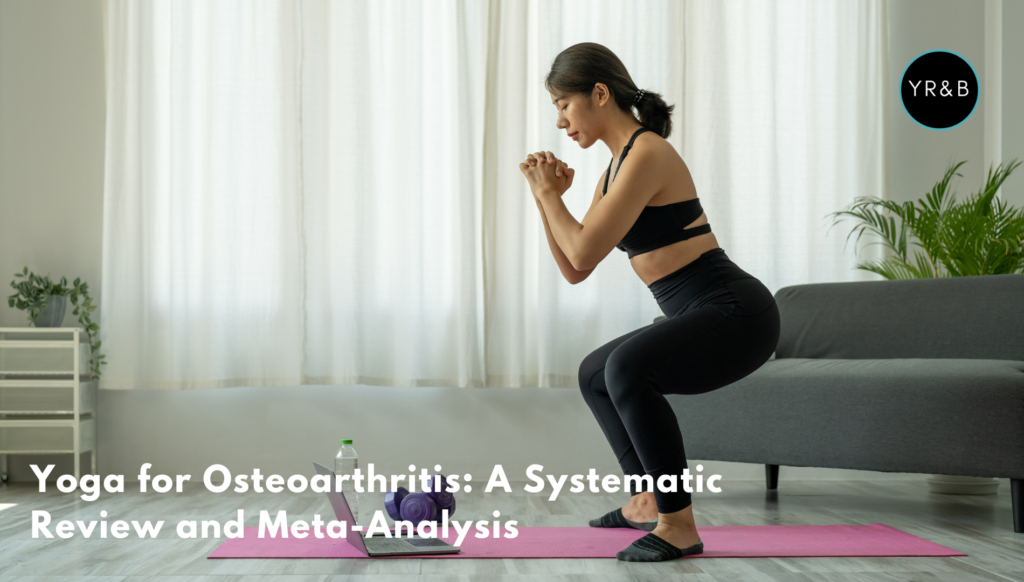What’s This Research About?
This systematic review aimed to find out what makes yoga interventions effective for people with osteoarthritis (OA), focusing on pain relief and improved joint function.
The study analyzed 16 randomized controlled trials (RCTs) and found that certain features of yoga programs help reduce pain and improve movement for people with OA. The results suggest that yoga can be a useful non-drug approach to managing OA when delivered in specific ways, such as supervised sessions combined with home practice, using a mix of poses, breathing techniques, and relaxation.
The purpose was to identify which content (poses, breathing, meditation), structure (session length, frequency), and delivery (supervised vs. home practice) aspects make yoga interventions effective for reducing osteoarthritis symptoms like joint pain and limited function.

TITLE: Key characteristics of effective yoga interventions for managing osteoarthritis: a systematic review and meta-analysis
PUBLICATION: Rheumatology International
DATE: June 2024
AUTHORS: Biswas I, Nalbant G, Lewis S, Chattopadhyay K.
Osteoarthritis: A condition where the cartilage between joints wears down over time. Without enough cushioning, the bones rub against each other, causing pain, swelling, stiffness, and trouble moving the joint. It’s most common in places like the knees, hips, hands, and spine, and it usually happens as people get older or after injuries.
Systematic Review: gathers and critically evaluates all relevant studies on a topic using a standardized method, but it may or may not include a meta-analysis.
Meta-Analysis: Statistically combes the numerical results (like effect sizes) from multiple studies to produce a single summary result. This requires that the studies report comparable quantitative data.
Standardized Mean Difference (SMD): A way to measure the size of the effect an intervention (like yoga) has in a study — across different scales or types of measurements.
- SMD 0.2 is considered a small effect.
- SMD 0.5 is a moderate effect.
- SMD 0.8 or higher is a large effect.
In this review:
- SMD 0.7 for pain means yoga had a moderate-to-large effect on reducing pain.
- SMD 0.4 for function means yoga had a small-to-moderate effect on improving physical function.

